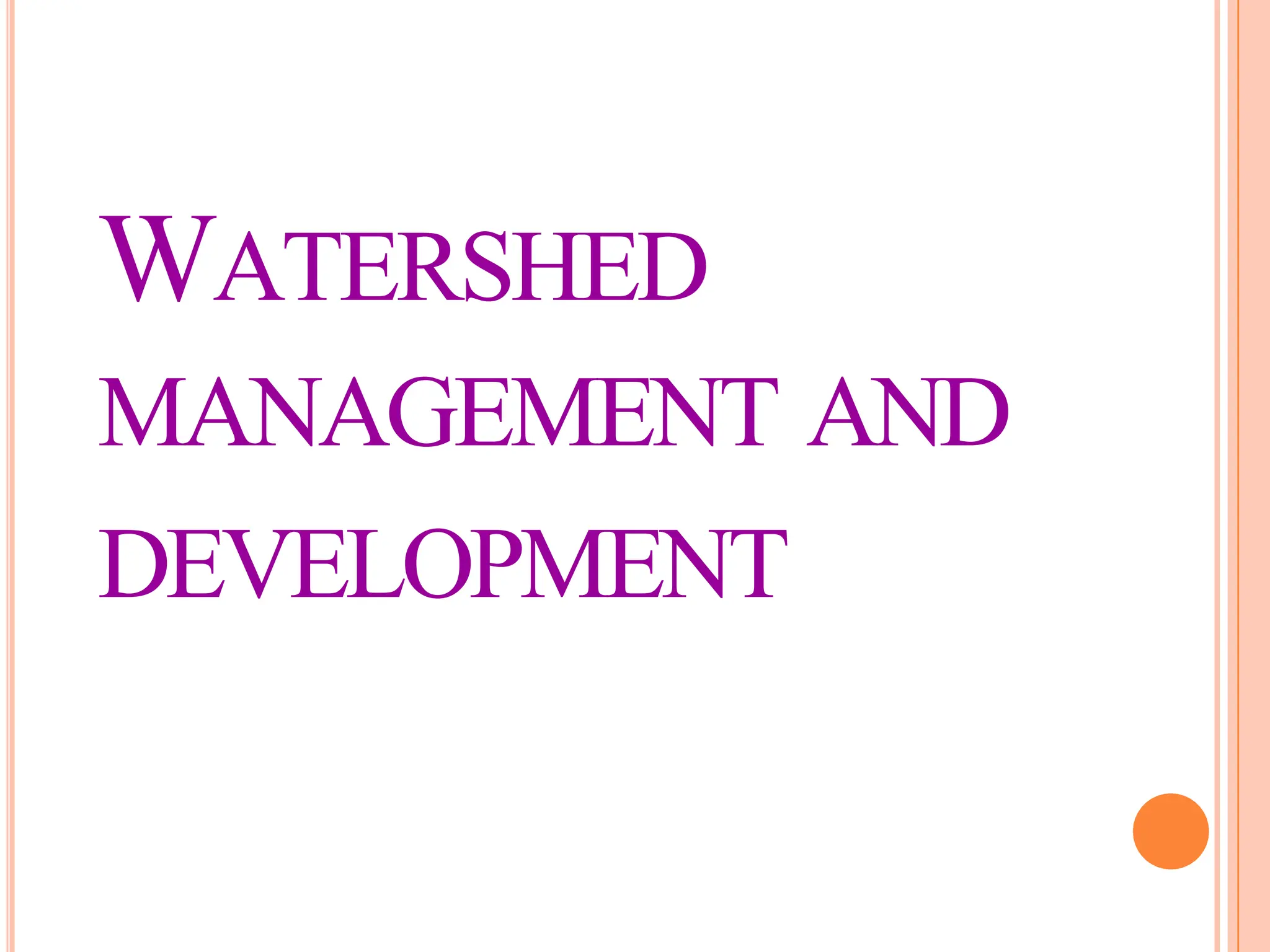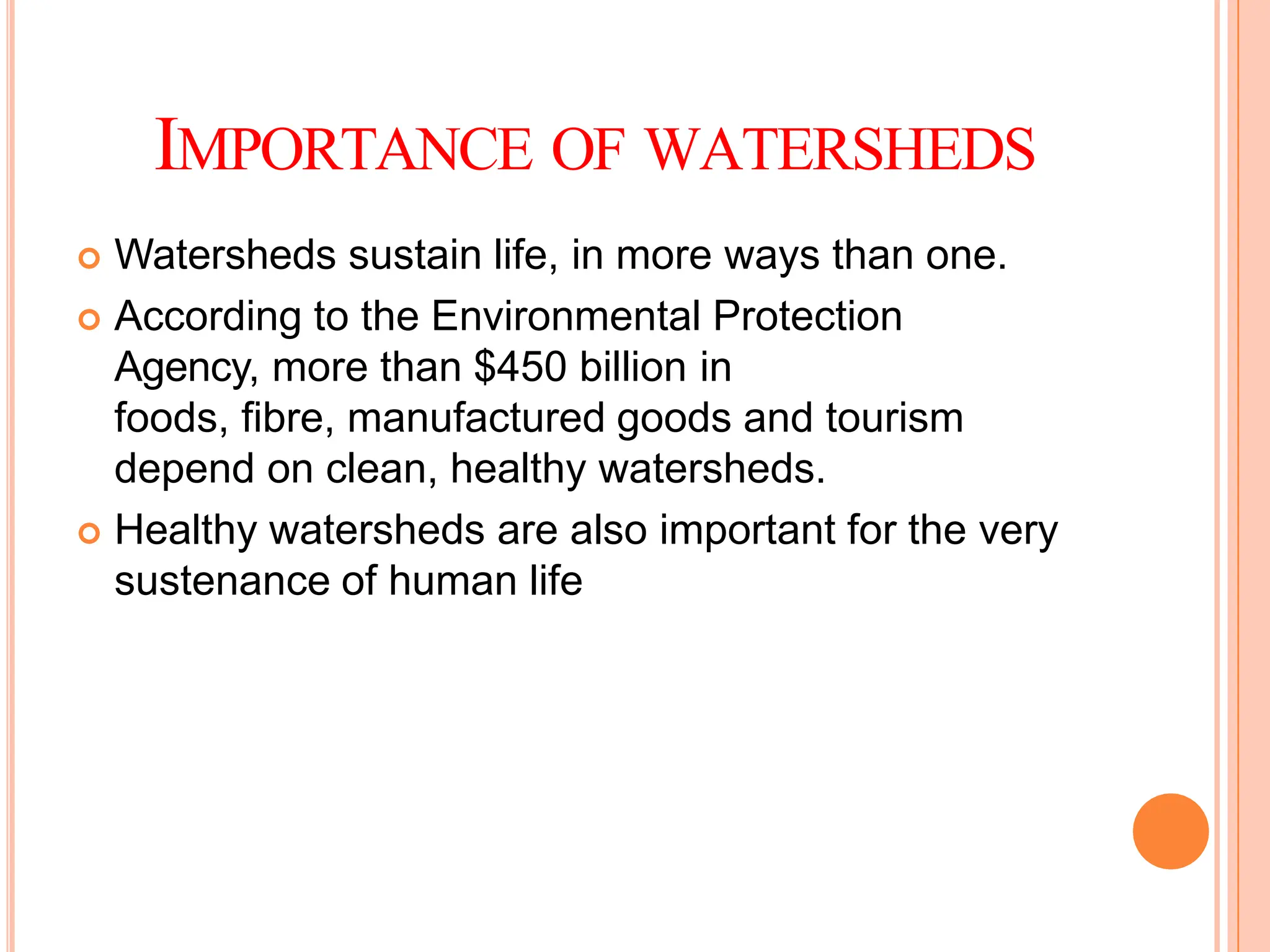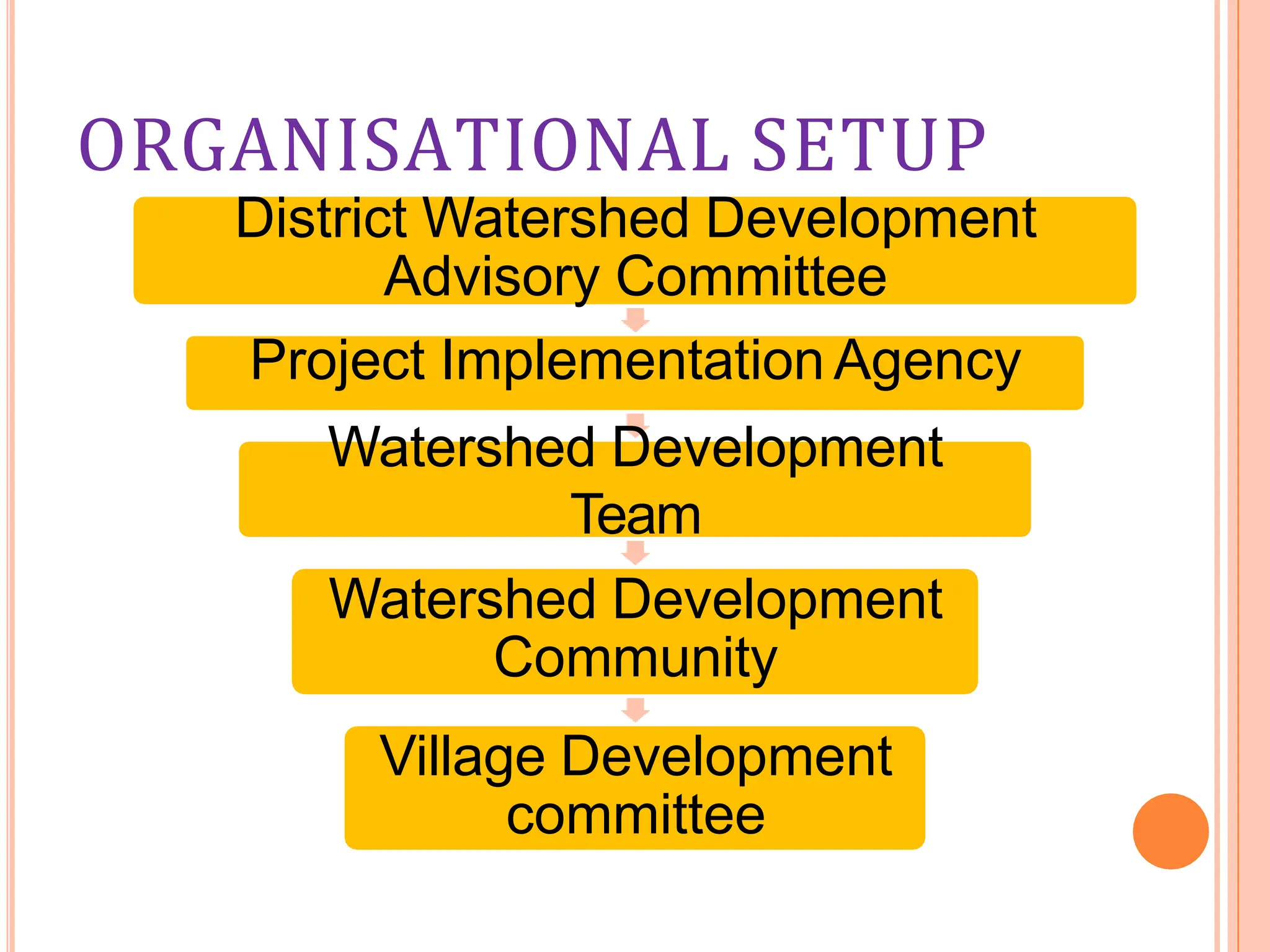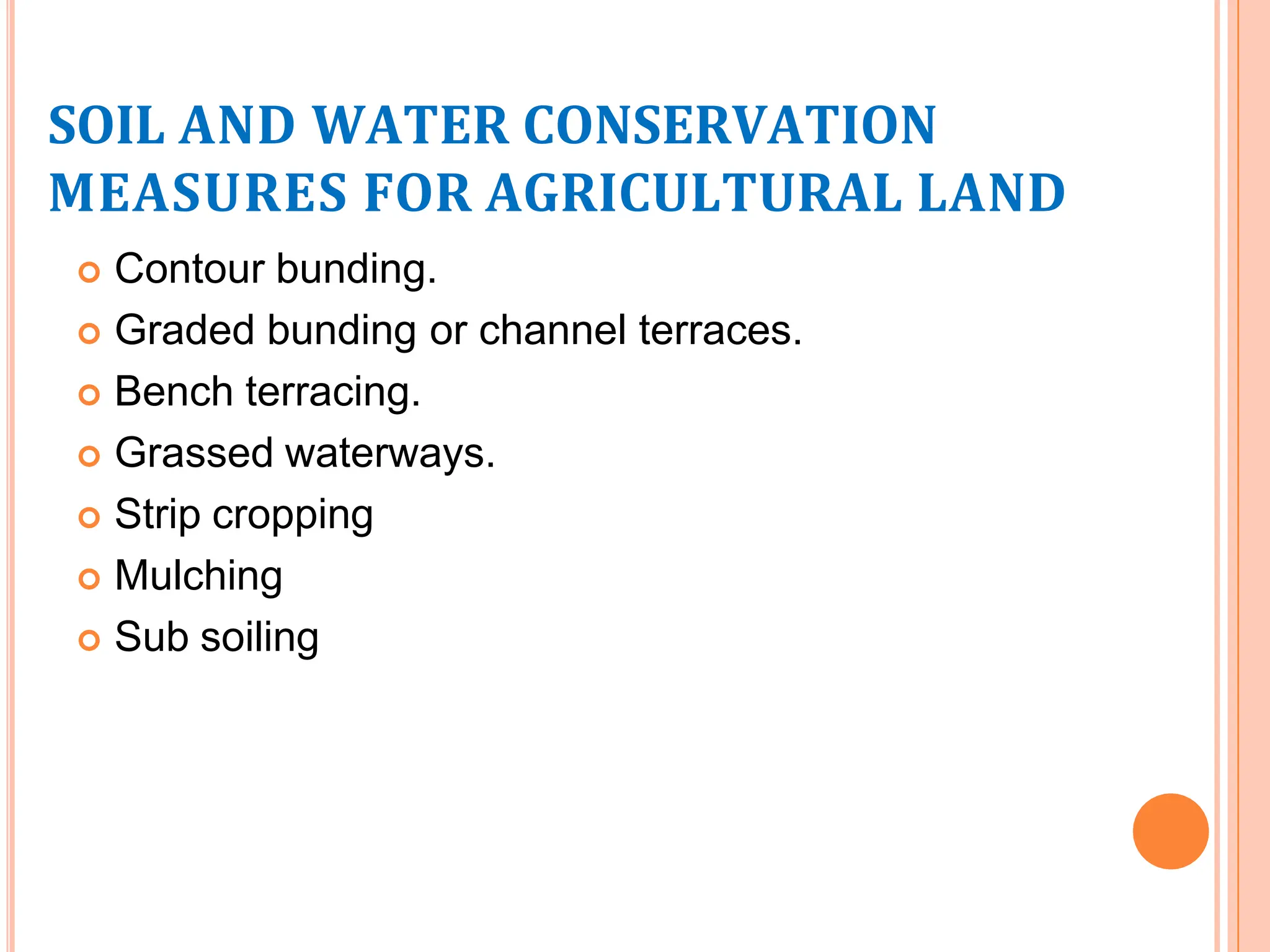This document provides an overview of watershed management and development. It defines a watershed as an area that drains to a common point. Watershed management aims to sustainably manage natural resources through an integrated approach. Its objectives include conserving land and water resources and improving socioeconomic conditions. Key aspects discussed include hydrological impacts, environmental protection, and socioeconomic and financial considerations. The document also outlines approaches, organizational structures, and steps involved in watershed planning.












































